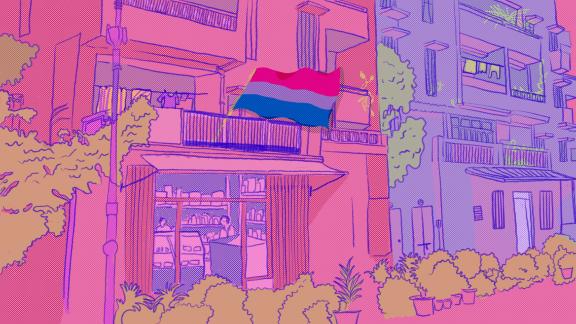I haven’t thought of the concept of bisexual visibility in a long time. Well, that’s not entirely accurate - I think about queer representation and visibility all the time, but I haven’t thought specifically about bisexual visibility.
Even within the queer community, people have often tended to invalidate bisexuality - we’re too gay for the straights, too straight for the gays. Oh, how does this even work, what if you suddenly become attracted to someone of another gender while we’re together? Oh, you’re dating someone of another gender, this isn’t a queer relationship, not really. All this and much more, me and all my bi friends have heard at some point or the other, I’m sure. Throughout my teens, while I was coming to terms with my sexuality, all the words we had to go off were gay, bisexual, and straight. There was a vague idea of the Kinsey Scale - a study published in 1948, describing a person's sexual orientation based on one's experience or response at a given time. Effectively, it meant that sexual attraction was more of a spectrum than just homosexual and heterosexual, and was fluid, changing over time. But apart from this nascent understanding, gay, bi and straight was all I knew of, and I was very firmly bisexual. A dead center on the Kinsey Scale, as it were.
I was very certain about my sexuality. But it seemed that very few people around me truly got it. Here are some formative experiences I’ve had around me being open about my bisexuality:
- An auntie who was one of my closest confidantes at the time, outing me (that she knew of) loudly in my home, and laughing about it in the way older people do when they think you aren’t serious about something.
- My mum, when I told her about my second girlfriend, asked me why it was that I liked women in the first place. To be fair to her, she just truly wanted to understand it and has been one of the strongest queer allies I’ve ever known.
- Various male friends in school, either fetishizing my identity or sexualizing me and wishing loudly that I was straight (did you know, boys, that you don’t always have to verbalize every single thought that comes to your head?)
- Moving to India from the Gulf, making new queer friends, going to queer bar nights as a little baby gay and having older lesbian women tell me that bisexual was just a stop on the way to being 100% gay.
And all this was just in my teen years, mostly. In my early 20s, there was that one particular (female) paramour who was lowkey suspicious, and even hateful of the fact that I also liked men.
We’re all pretty fed up with it, honestly. And we’re fed up of the jokes about how we can’t pick a side either. It’s 2023, there’s so much more vocabulary around queer identities now, and the more I think about my queerness I definitely feel like my labels as well as my gender are much more fluid than they were when I came out over a decade ago. And as I look around at the young queer folks on the internet, or even around me physically, it definitely looks like we’re slowly (hopefully) moving into a post-label society, and someday I hope that being queer in any way shape or form just doesn’t register as a huge deal - to anyone at all. But then I also remember that what I see around me is my algorithm-created bubble of like-minded people and queers, and the larger majority is still a different story. To date, even in the last few years, we’ve seen cases of young queer people being forced into “conversion therapy” in the hopes that their sexual orientation will change. Some of us do live in the queer future we dream of, but outside of our bubbles, there’s still a way to go, and bisexuals are still at risk of not being taken entirely seriously by anyone, which is why bi visibility is still relevant and important in my books. Because people need reminding that we’re still pretty damn queer no matter which gender we date.
.
The blog author, Shalaka Pai, is a filmmaker, animator, and illustrator based out of Bangalore, India. They work with visual storytelling across various mediums, and like exploring themes of neurodivergence, queerness, and lived experience in their work. Visit their website paimakesthings.com for more.
when
region
South Asia








